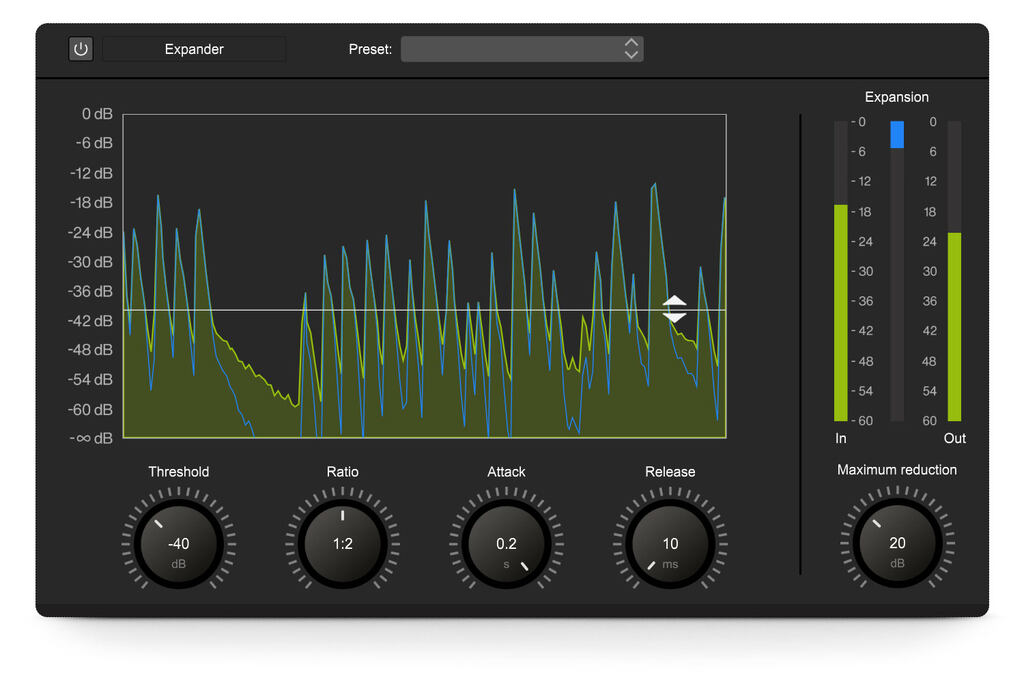
Blog
True love for great sound unites us.
Blog
True love for great sound unites us.
If there is one thing you don't want in your recordings, it is noise. There are a few things that can help with that. One of them is using a noise gate. Let's check out what a noise gate is and how you can use it to minimize noise in your recordings.
On a technical level, a noise gate is a type of dynamic audio processor that attenuates the amplitude (lowers the volume) of an audio signal when its level falls below a specified threshold. It continuously monitors the input signal and compares its amplitude against the set threshold.
A noise gate controls audio signal flow by allowing sounds above a set level to pass through while blocking quieter sounds.
If the input signal's amplitude drops below this threshold, the gate reduces the gain by a certain level, often completely muting the signal. When the input signal exceeds the threshold (is louder), the gate doesn't change the signal.
Now, let us have a listen.
Below, you can find 2 sound samples from a live studio session. A snare drum mic and an electric guitar recorded through 1 microphone on an amp. You can find the entire session to download in myLEWITT (St. Agnes - move like a ghost).
You will hear that both microphones get a lot of "bleed" from sources they don't want to capture. The gated versions have a simple noise gate added to eliminate unwanted sound.
Typical parameters for a noise gate are:
Noise gates come in all shapes and sizes. They can be software plugins, DSP effects in an audio interface, or guitar pedals.
A noise gate can sometimes sound choppy and unnatural by abruptly cutting off quieter sounds; to smooth things out, using an expander instead of a gate can yield better results. An expander reduces the volume of signals below a set threshold more gradually, resulting in a more natural sound. An expander is like a reverse compressor.
It is very handy to have an expander built into your audio interface to make things easy for yourself!
LEWITT audio interfaces come with a built-in DSP noise gate/expander.
An expander is a dynamic processor similar to a noise gate, but instead of completely cutting off sounds below the threshold, it gradually lowers their volume, making the quiet parts even quieter.
This creates a more natural and smooth transition between louder and softer sounds compared to a gate's abrupt cutoff.
An expander is like a reverse compressor.
When the signal falls below the threshold, the expander reduces the gain based on a set ratio, which determines how much the volume decreases relative to the original level. It works the same way as a compressor.
Expanders can be used to reduce background noise, making louder sounds stand out more while keeping quieter sounds audible but less prominent. You can also set an expander to function exactly like a noise gate.
The typical parameters for an expander are the same as those for a noise gate (see above), with the addition of a ratio.
Ratio: Determines how much the signal below the threshold is reduced. Unlike a gate, which fully attenuates the signal when closed, the expander applies gradual reduction based on this ratio (2:1, 4:1, for example).

So, when should you use a noise gate? Here are a few examples where a noise gate will make your life easier and your recordings better:

In the following use cases, using an expander is better than a noise gate:
Our audio interfaces come with an expander and are great for vocal recording, podcasting, and streaming.
Using an expander is very straightforward. Start with the threshold. Adjust it until the main sound is not affected. Make sure you're listening to quiet parts.
Next, adjust the ratio. A 1: ∞ ratio is a gate. You can start there and then slowly reduce the ratio until you are happy with the sound. A fast attack, like 0.2 seconds, is a good starting point. Set the release to your taste. Listen and adjust accordingly. Trust your ears, and you will be fine.
A noise gate doesn't exactly "remove" background noise. Instead, it mutes or reduces the audio signal when it's below a certain volume level, which can make background noise less noticeable during quieter moments.
When the main sound (like a voice or instrument) is loud enough, the gate opens, letting all sounds through, including any background noise.